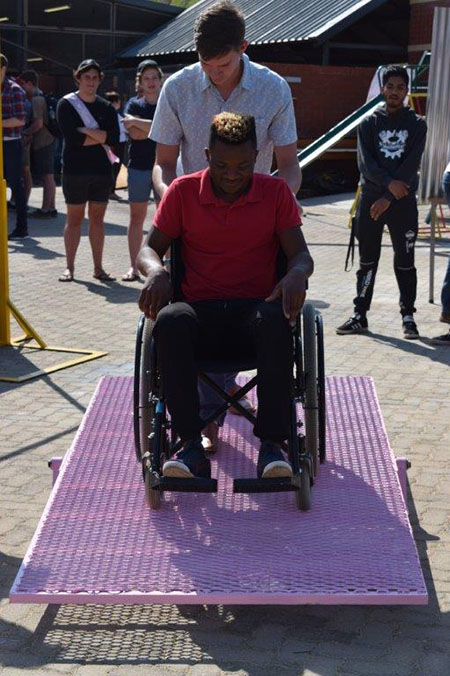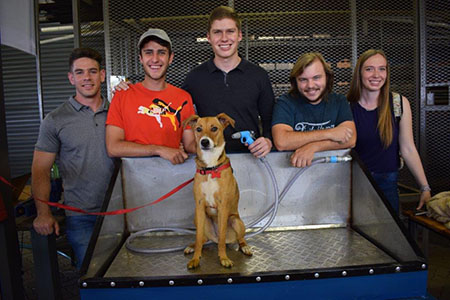One of Albert Einstein’s most famous quotes is: “We can’t solve problems by using the same kind of thinking we used when we created them.”
This is certainly the mind-set of second-year students at the Faculty of Engineering at the North-West University (NWU) who recently had their first taste of the engineering world when they had the opportunity to work on practical local community projects.
Various projects were tackled with the aim of improving the quality of life of the local community. Some projects were identified by themselves, but most of them were needs from various areas in the local community. Under the leadership of Hannes du Toit and Pieter Tolmay various projects were identified.
“Clients had different concepts and development needs. After they saw what we had achieved in the past, they realised that our students could address their development needs,” explains Hannes.
“We naturally jumped at the opportunity and these projects became part of the subject Professional Practice.”
He explains that the projects not only provide the students with a broader framework of the whole engineering process, but they also create the practical opportunity for exposure in the students’ second year of study.
More than 50 student groups recently showcased their products during a final exhibition. Although this will be the last year that this subject is taught at the Faculty of Engineering, it did not dampen this group of second-years’ enthusiasm.
According to Hannes it is sad that the subject will not be presented from 2020 onwards, as it gave undergraduate students a taste of what they could expect in practice. Various organisations like the Potchefstroom Hospital, Cross Connect and the Potchefstroom Animal Welfare Society (PAWS), benefited from these projects.
According to Hannes the faculty will continue with community projects, but with a multidisciplinary approach.
“The plan is to have a five- to eight-year plan for every project. By keeping the members of the relevant organisation involved with the project during this period, it will eventually become a self-sufficient and sustainable project. The idea is also that this approach will eventually help to address unemployment in the communities involved.”
The building and engineering work was previous handled by first-year students, but Hannes has changed that since last year so that the second-year students now have to handle this. “This was ’n good decision, as we definitely can see an end product of a better quality.”
Apart from the building work, the students also have to handle the planning, marketing, finances and implementation successfully themselves. “These projects prepare the students for the reality that they have to face one day. Many former students who have contacted me in the past could not stop talking about the value of what they have learnt here,” says Hannes.
The students built various items of playground and gymnasium equipment. Among other things they built a wheelchair obstacle course for the Potchefstroom Hospital.
“Every organisation to whom we spoke compiled a kind of wish list for us. We wanted to make sure that the project does not bore the students, but it also should not be so difficult that it is not feasible,” says Hannes.
Collapsible book shelves, a device that can produce ropes from two-litre plastic bottles, classrooms and greenhouses that can be assembled and disassembled quickly, feed mixers, mobile baths for animals, and a safe pit toilet that prevents children falling into the hole, are only a few of the innovative ideas that the students came up with.
“We now look forward to taking the faculty’s community engagement to the next level, and to continue to make a real difference in people’s lives.”

This is a part of the wheelchair obstacle course that was built for the Potchefstroom Hospital.

This group of students built a collapsible dog bath.
